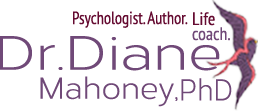Until recently, we believed that the brain formed in early life and that its capacity to grow and learn began to decline thereafter. Newer research has demonstrated that the brain has an amazing neuroplasticity capacity. This means that we can learn new, even complicated things late into life. Because of what we have learned about the brain’s plasticity, we also know that we can unlearn things that were earlier programmed, such as a fear, or even more debilitating, phobias. It means that if we are right handed, that even as adults we can learn to write with our left hand. It means that you can change beliefs if you practice reciting opposing ideas. Think about the possibilities! Because of what your brain learns from it, your daily environment is a tremendous influence on how you feel about your life. What would you like to learn, change, or overcome? I was just wondering……
Let’s start with the concept of fear. When I was very young, before I went to graduate school, I worked for several years for an airline. Because I had a fear of flying, { fear of being confined in that space from which I could not escape}, I worked in reservations, not as an attendant. However, we did receive free trips and I would prep myself with alcohol before flying, one time at 7:00 am to catch an early flight to Miami. After I left this job and got into the mental health field, I spent many years studying for my advanced degrees during which time I made sure all of my traveling was either by car or by train. Twenty nine years passed and my husband said he wanted to travel somewhere outside of North America, so we drove to Florida to take our first cruise. The next year my husband announced that he would meet me in Florida for the next cruise because he was not willing to drive there again. My flying phobia had grown really severe in all of these years of avoidance, but I knew it was time to face my fear. So with great trepidation, I made the airline reservations four months before the planned trip and then I began the work to create new cerebral neurons that loved flying. Twice a week I had long drives for nursing home consulting, and I began each drive by talking out loud to myself about how I loved flying. I would remind myself of my accomplishments, note that many people fly and enjoy it and if they can do it so can I. I basically engaged in a pep talk to myself for about 20 minutes. I am convinced the verbal component is crucial because it prevents the mind from thinking an opposite thought. Fears become greater because we give them a lot of attention. Every time we remind ourselves we are afraid of something and list the reasons why, we are reinforcing that fear and that thought races over the neural connection already established for it so that it becomes a deep trench in the brain’s neural connections. My verbal practice created a new fear free neural connection in my brain resulting in a fear free flight four months later. Since then I have flown all over the world without fear.
Another way to empower the brain’s plasticity is to learn something new. We all do this, of course, but often we allow our learning to decline after our school years and even more often after retirement. But just like in childhood when we learn to walk, to talk, to ride a bike, etc., we can learn strange new things with practice. While I was reading Norman Doidge’s book, The Brain that Changes Itself, I began writing the alphabet and one short sentence once a day for a month with my left hand. As recommended in the book, I then stopped the practice and 4 months later when I attempted the same exercise, the writing was much improved! The book explained that it takes some months for the new learning to coalesce and then the result is improvement. When I broke my right wrist around this time, they handed me papers in the hospital and asked me to sign an X with my left hand. I astonished the staff when I produced my signature with my left hand! I highly recommend the Doidge book to anyone who is interested in learning and the brain.
At the same time we must realize that due to this plasticity, our brains are constantly learning from our environments. Our belief system becomes structured by our surroundings. Our brains learn not only from what we study and read, but also from what we watch on television and by the company we keep. Even something as seemingly innocuous as a sitcom may teach us what we come to believe are acceptable norms. Once our beliefs are formed, it is much harder to challenge them. It is important to take a moment and try to think outside of the box and wonder about the learning environment of your brain. Is it getting enough exposure to life enhancing information, or is its learning environment lacking in growth producing ideas and instead, its exposure is too narrow and one sided? Does your living environment make you think or are you in a non-stimulating routine that does not promote enrichment? Are the people in your inner circle promoting growth and new ideas for you to explore or do they portray life as a struggle, every man for himself? Are they happy or complaining? Without your awareness, your brain is learning every single minute of your day. You have control over that which you expose to your brain. Think of your brain as a camera. You can change its exposure. Are you content with your daily education? I was just wondering…………………

Awesome, thank you.